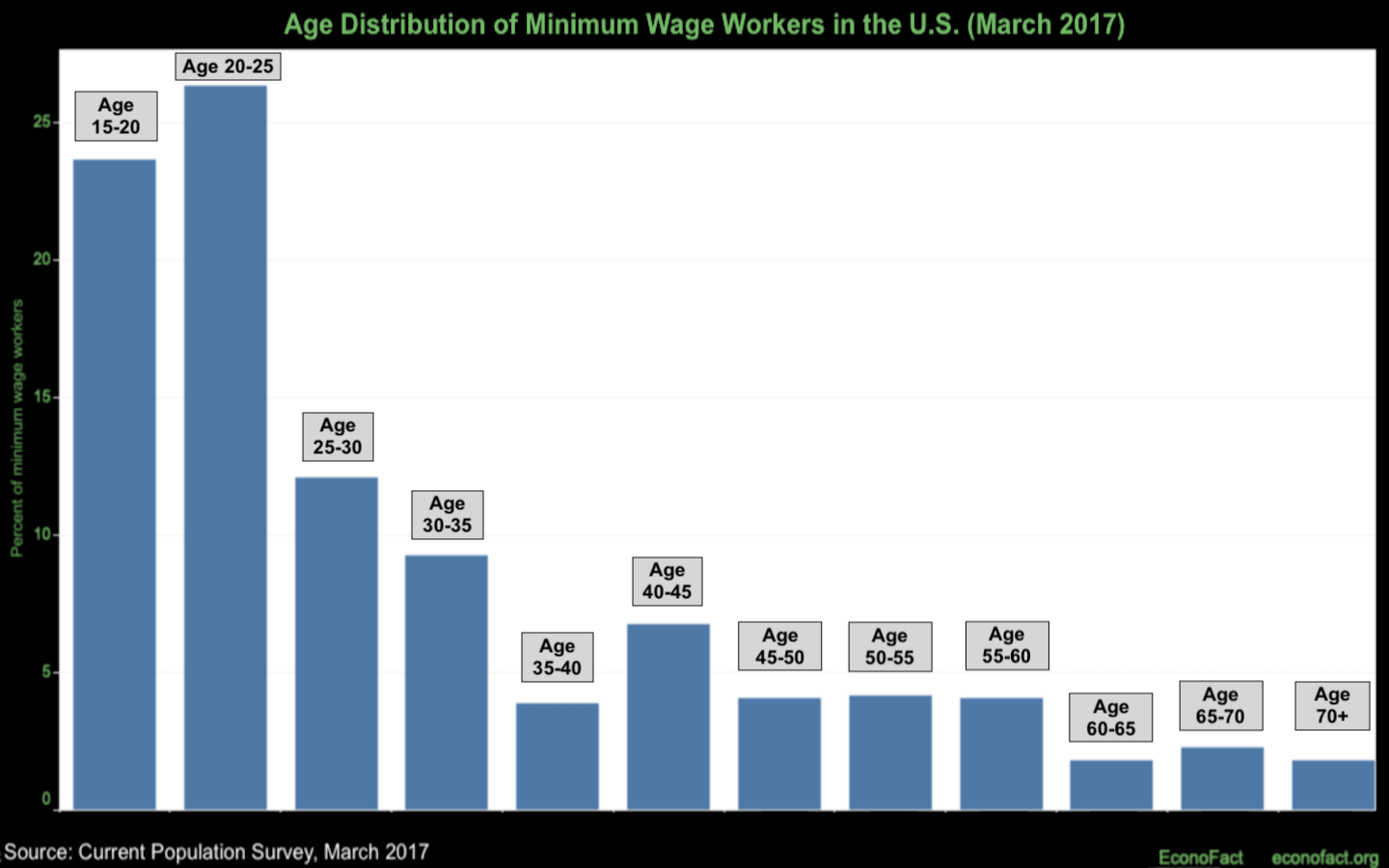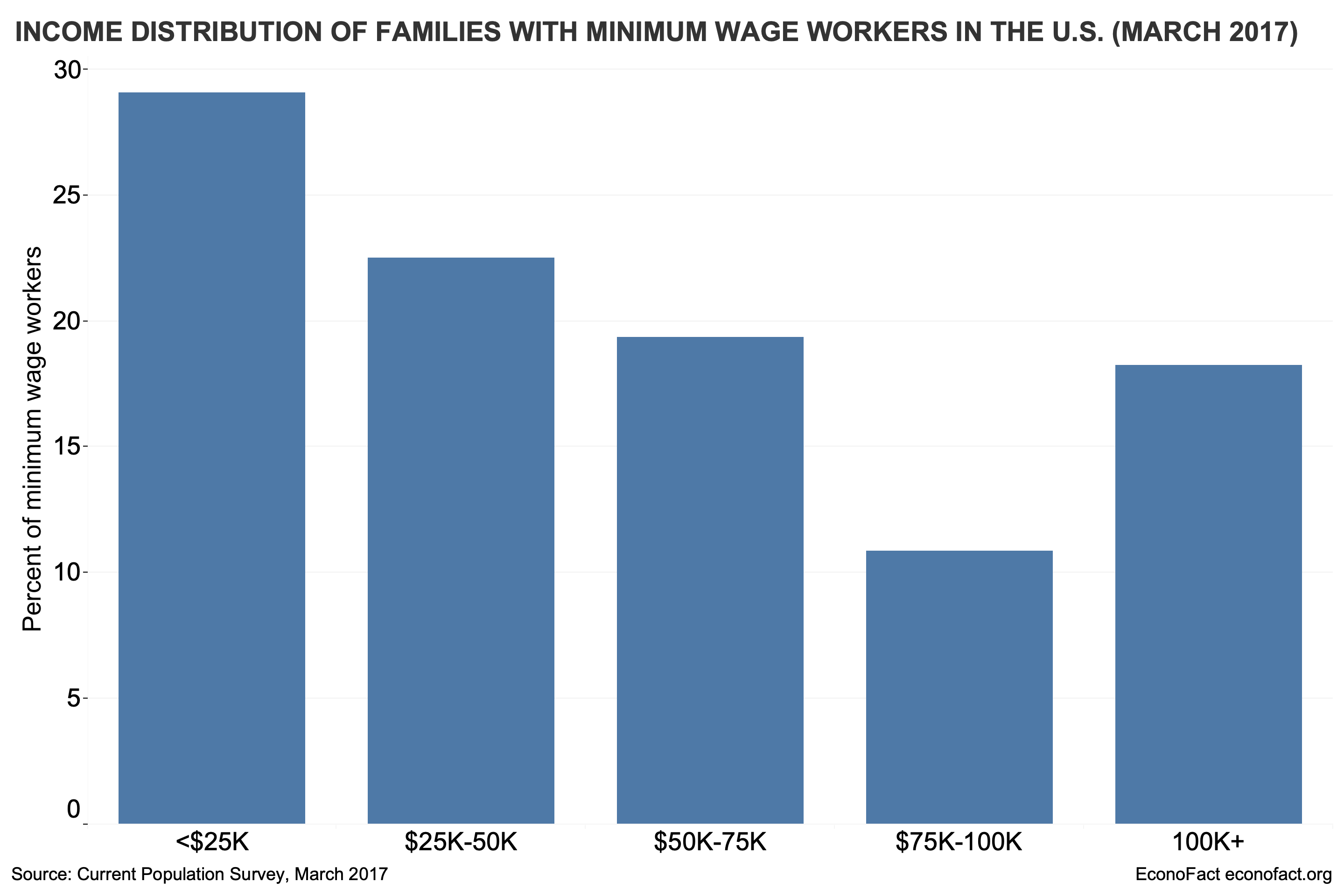Who Benefits from a Higher Minimum Wage?
Texas A&M University
The Issue:
Raising the minimum wage is broadly viewed as a policy that combats poverty. Most of the focus of the debate over the minimum wage has been on whether raising it leads to job losses, but an overlooked key point is which workers see their wages rise with an increase in the minimum wage.
The workers who benefit from a higher minimum wage are not necessarily those who one would target if the purpose of this policy is poverty alleviation.
The Facts:
- The Federal minimum wage is low by historical standards — when adjusted for inflation — and has not been increased since 2009. As a response, many states and municipalities have set local minimum wage policies above the Federal level. The Federal minimum wage is $7.25, as compared to $1.60 in 1968. But prices have risen faster than the minimum wage, eroding its purchasing value. Taking inflation into consideration, the 1968 minimum wage would be worth $9.25 in today's dollars, and its value in that year represents the historically-highest minimum wage when adjusting for inflation. States and municipalities are able to increase their minimum wage beyond the Federal level, and many do. Twenty-two states and the District of Columbia have raised minimum wages since 2014 (see here for state minimum wage policies). Forty local governments have their own minimum wage, as compared to five in 2012. A number of states, including California and New York, are phasing in increases to levels as high as $15 per hour.
- Only a small number of workers are actually paid the prevailing minimum wage in their area — and they tend to be younger workers, most without children. In March 2017, just 3.2 percent of workers earned at or below their state’s minimum wage (5.5 percent of workers who are paid by the hour), and only 31 percent of them were working full-time (35 or more hours per week). Fully half were under the age of 25 and three-quarters under the age of 35; 28 percent were currently enrolled in school. Just 16 percent were adults with children.

- Most of the workers who earned the minimum wage were not from poor families. Using data from the Bureau of Labor Statistics Current Population Survey, the median family income of those earning the minimum wage was $49,500 in 2017 – the poverty level of income for a family of four was $24,600. Ten percent of workers earning a minimum wage came from households with an annual income of more than $150,000 and 5 percent from a household earning more than $210,000 (see here). Just 14 percent of families with a minimum wage worker receive SNAP assistance (Food Stamps). Most minimum wage workers, therefore, do not live in low-income households (see chart). The fact that the composition of the minimum wage workforce is not tilted towards low-income households is not a new observation: only a quarter of minimum wage workers were poor in the mid-1980s, and about 30 percent in the mid-1990s.
- An increase in the minimum wage can raise prices in a way that works against the poor. An increase in wage costs due to a rise in the minimum wage contributes to higher prices for those goods and services produced with minimum-wage labor. Those higher prices cost low-income households relatively more than high-income households, particularly since most minimum-wage workers are employed in food service and a relatively higher share of low-income households' budgets goes to the purchase of food products (see for instance here and an empirical study that finds restaurant prices rise in response to minimum wage increases). The effect of these price increases on the poor is important because, as mentioned in the previous point, wages increase from an increase in the minimum wage accrue mostly to households that are not poor.
- It’s unclear if the minimum wage ripples up to raise wages higher up the pay scale. If raising the minimum wage induces firms to offer higher wages at levels above the mandated minimum, the policy might have a broader impact than if the effect is limited to those who earn at the minimum wage level. However, whether this happens is subject of debate. The evidence that the minimum wage leads to “ripple effects” further up the wage distribution may be driven by systematic errors in the reporting of wages, suggesting that pay increases for employees who earn slightly more than the minimum wage are limited. On the other hand, increases in the minimum wage are sometimes accompanied by decreases in the non-wage benefits provided to workers, and these cuts in benefits to offset higher wage costs may have such ripple effects. For instance, there is evidence that state-level minimum wage changes from 2011-2016 decreased the likelihood that individuals report having employer-sponsored health insurance. The effects found using American Community Survey data were largest among workers in very low-paying occupations, for whom coverage declines offset 9 percent of the wage gains associated with minimum wage hikes (see here). This represents a negative impact on workers who earn a few dollars more than the minimum wage.
What this Means:
The minimum wage is not an effective tool to reduce poverty or income inequality. Many of the beneficiaries do not live in low-income households. Moreover, there is some evidence that workers who earn the minimum wage tend to see relatively rapid gains in hourly wages as they acquire experience. Policies that supplement the incomes of low-wage workers, like the Earned Income Tax Credit, are better targeted to low-income families and encourage work.
Like what you’re reading? Subscribe to EconoFact Premium for exclusive additional content, and invitations to Q&A’s with leading economists.

